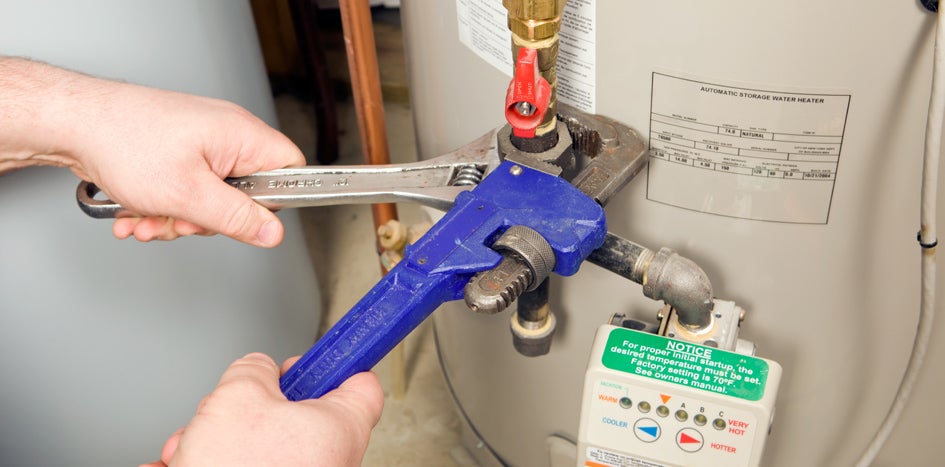Fire Safety Basics for Schools
Hail-hammered roofs tend to get top billing when talk turns to high-dollar school property claims. But fires, while not as common, can be equally destructive. Two Fund members recently lost entire campuses to large-scale blazes. The combined claim costs came it at about $35 million. Most importantly, nobody was injured in either fire, but administrators were forced to find alternative facilities for students until new campuses were completed.
Large-scale fires can disrupt learning, destroy property, and claim lives. To help Fund members protect their organizations and their staff and students, our risk solutions team put together this list of fire safety basics for schools.
Assess Your Risk
Your local fire department might be able to inspect your facilities for fire risk. If not, the state fire marshal will inspect facilities for a fee. Remember, though, that the state fire marshal will not grant refunds for failure to verify whether a local option is available.
Comply with Fire Code
Local fire codes protect life and property by addressing factors such as building design, materials, smoke alarms, fire extinguishers, emergency exits, and sprinkler systems. Work closely with your fire officials, also called the Authority Having Jurisdiction, to ensure compliance. Small school districts may not have a locally adopted fire code, so it’s important to know the current fire code adopted by the State Fire Marshal’s Office. You can also check with your volunteer fire department.
Store Supplies Safely
Fire sprinkler systems have been saving lives and property for more than 200 years. In fact, an NFPA study showed that sprinklers cut the fatality rate by 87%:
- In buildings that have sprinklers, supplies should be stored no closer than 18 inches from the ceiling. If you store supplies any closer, they could block the flow of water during a fire.
- Fire code requires that all stored combustible materials such as wood, paper, foam, cardboard, or plastic boxes have a ceiling clearance of 24 inches in buildings without fire sprinkler systems.
- Combustible items can easily ignite near electrical equipment. Electrical rooms, air handling rooms, and mechanical rooms must remain free of combustible items and hazardous chemicals. Access to these areas should be limited to maintenance staff.
Take Care of Ceiling Tiles
Ceiling tiles form a barrier that helps prevent fire from entering the sub-ceiling and spreading to other rooms. They also serve as a protective area for HVAC air returns and crawl spaces.
- Do not decorate, remove, or damage ceiling tiles.
- There should be no missing or damaged ceiling tiles.
- Ceiling tiles cannot be pushed up or vented and must fit securely within the grid.
- Items cannot be hung from or through ceiling tiles or tile grids. That includes electrical wiring and extension cords.
Keep Entries and Exits Clear
Hallways and corridors are designed to allow quick entry and exit. Anything that blocks students’ and teachers’ paths creates a hazard.
- All entries and exits must be clear of debris.
- Routes in and out of classrooms must be clear of items such as desks and other furnishings, educational materials, and students’ personal belongings.
- Any door that serves as an exit or emergency exit should never be blocked, decorated, or covered with combustible materials. Door decorations can camouflage or block the exit, making it difficult to evacuate quickly. Decorated doors also create a fire risk.
Practice Electrical Safety Basics
Professional electricians log 12,000 hours’ training and pass an exam before earning their license. The rest of us can do our part to prevent fires by embracing these electrical safety best practices:
- Multi-plug adapters and electrical power strips should not be connected or used as a substitute for permanent wiring.
- Extension cords should not be run through holes in walls or the ceiling, connected to each other, used as permanent wiring, plugged into multi-plug adapters or electrical power strips, or used for more than 90 days.
- Portable electric space heaters cannot to be used within three feet in all directions of combustible material.
Pro tip
Electrical issues are a common cause of fires. Your TASB risk solutions consultant has the equipment and expertise to assess your facilities’ risk at no additional cost.
Decorate Safely
Staff and students spend much of their time at school. Student artwork, holiday decorations, and other décor can make your classrooms, gymnasiums, and hallways feel more like home – but they can also ramp up the risk of fire:
- Décor and teaching materials displayed in corridors are not to exceed 20% in buildings that do not have a functioning sprinkler system. Buildings with full sprinkler systems may have up to 50% wall coverage.
- No decorations are allowed on ceilings, classroom doors, or within 36 inches of the door frame.
- Excessive combustible materials on walls could disguise and/or compromise evacuation route integrity.
Prepare for Emergencies
In 1911, a fire erupted at the Triangle Shirtwaist Factory in New York City. Because the doors to the stairwells and exits were locked to keep employees from taking unauthorized breaks, 146 people lost their lives:
- Exit doors should never be chained, locked, or blocked.
- Emergency notifications will made in clear, concise, language, without the use of codes or jargon. When a fire alarm or other emergency announcement directs students, staff, and volunteers to evacuate the building, student accountability procedures begin.
- Emergency exit signs should be illuminated, and designated emergency exits should have three-feet clearance around them to provide adequate space for evacuation.
- Everyone must participate in fire drills.
- Fire evacuation maps, severe weather procedures, and emergency kits should be mounted near exit doors in all instructional and non-instructional rooms at a height appropriate for all occupants, including those who may have access or functional needs. Primary evacuation routes are shown in red and secondary routes in green.
Facilitate a Speedy Response
If a fire happens at one of your facilities, it’s important that emergency responders arrive as soon as possible:
- All instructional and non-instructional facilities should have reliable communication with the nearest campus or administration facility.
- Instructional and non-instructional facilities should have the address clearly marked on the marquee or front of the building. Addresses may be painted on a curb or directional sign but are not adequate as the primary addressing.
Prepare Your Team
Even the best fire safety plans could fall short if employees don’t have the tools to implement them. Your TASB risk solutions consultant is here to train your team on general topics such as fire and electrical safety basics and lockout/tagout awareness, as well as specialized fire safety topics for auxiliary staff.
Risk Solutions Staff
The TASB risk solutions team includes risk solutions consultants and communications professionals who deliver training, consultations, articles, and resources that help Fund members control losses and their associated costs.
You May Also Like…
View All Related Insights
8 Steps to a Preventative Maintenance Program
Preventative maintenance can save money for schools and minimize operational disruptions by extending the lifecycles of roofs, boilers, and other property.

TASB Risk Management Fund Prevails in Property Claim Lawsuit
The TASB Risk Management Fund won a unanimous jury verdict in Coleman County against a property claim lawsuit brought by a West Central Texas school district.

Extreme Weather, Inflation Create Challenging Property Market
The increased frequency of natural disasters is creating a hard property market, making it challenging when going out to bid or renew.

Congratulations to the 2023 Excellence Award Winners
Learn about your peers’ award-winning initiatives and consider how you might adapt them to manage risk in your organization.
